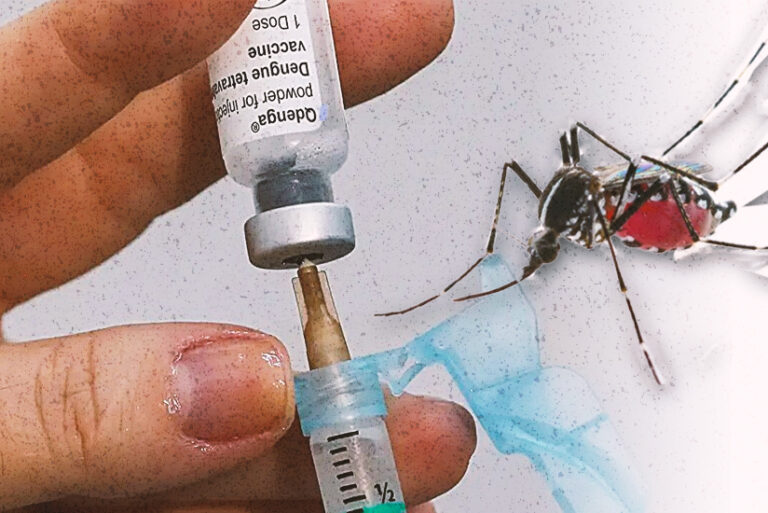By Henrylito D. Tacio
Despite the fact cancer cases are increasing around the world, most countries do not adequately finance priority cancer and palliative care services as part of universal health coverage (UHC), according to the World Health Organization (WHO).
Based on the best sources of data available in countries, the International Agency for Research on Cancer (IARC) reported there were an estimated 20 million new cancer cases and 9.7 million deaths.
The estimated number of people who were alive within 5 years following a cancer diagnosis was 53.5 million. “About one in five people develop cancer in their lifetime, approximately one in 9 men and one in 12 women die from the disease,” said IARC, the WHO cancer agency.
The global WHO survey on UHC and cancer shows that only 39% of participating countries – about 115 of them – covered the basics of cancer management as part of their financed core health services for all citizens, ‘health benefit packages’ (HBP).
“Only 28% of participating countries additionally covered care for people who require palliative care, including pain relief in general, and not just linked to cancer,” the United Nations health agency said.
Three major types of cancer
The IARC said 10 types of cancer collectively comprised around two-thirds of new cases and deaths globally in 2022. The three major cancer types were lung, breast, and colorectal cancers. Data covers 185 countries and 36 cancers.
Lung cancer was the most commonly occurring cancer worldwide with 2.5 million new cases accounting for 12.4% of the total new cases. Female breast cancer ranked second (2.3 million cases, 11.6%), followed by colorectal cancer (1.9 million cases, 9.6%), prostate cancer (1.5 million cases, 7.3%), and stomach cancer (970 000 cases, 4.9%).
Lung cancer was the leading cause of cancer death (1.8 million deaths, 18.7% of the total cancer deaths) followed by colorectal cancer (900 000 deaths, 9.3%), liver cancer (760 000 deaths, 7.8%), breast cancer (670 000 deaths, 6.9%) and stomach cancer (660 000 deaths, 6.8%). Lung cancer’s re-emergence as the most common cancer is likely related to persistent tobacco use in Asia.
There were some differences by sex in incidence and mortality from the global total for both sexes. For women, the most commonly diagnosed cancer and leading cause of cancer death was breast cancer, whereas it was lung cancer for men. Breast cancer was the most common cancer in women in the vast majority of countries (157 of 185).
For men, prostate and colorectal cancers were the second and third most commonly occurring cancers, while liver and colorectal cancers were the second and third most common causes of cancer death. For women, lung and colorectal cancer were second and third for both the number of new cases and of deaths.
Cervical cancer was the eighth most commonly occurring cancer globally and the ninth leading cause of cancer death, accounting for 661,044 new cases and 348,186 deaths. It is the most common cancer in women in 25 countries.
Striking cancer inequity
Global estimates reveal striking inequities in the cancer burden according to the Human Development Index. The HDI is a statistical composite index of life expectancy, education, and per capita income indicators.
This is particularly true for breast cancer. In countries with a very high HDI, one in 12 women will be diagnosed with breast cancer in their lifetime and one in 71 women die of it. By contrast, in countries with a low HDI; while only one in 27 women is diagnosed with breast cancer in their lifetime, one in 48 women will die from it.
“Women in lower HDI countries are 50% less likely to be diagnosed with breast cancer than women in high HDI countries, yet they are at a much higher risk of dying of the disease due to late diagnosis and inadequate access to quality treatment,” explains Dr. Isabelle Soerjomataram, Deputy Head of the Cancer Surveillance Branch at IARC.
WHO’s global survey of HBPs also revealed significant global inequities in cancer services. Lung cancer-related services were reportedly 4–7 times more likely to be included in a HBP in a high-income than a lower-income country.
On average, there was a four-fold greater likelihood of radiation services being covered in a HBP of a high-income than a lower-income country. The widest disparity for any service was stem-cell transplantation, which was 12 times more likely to be included in a HBP of a high-income than a lower-income country.
Projected cancer burden
According to the WHO, over 35 million new cancer cases are predicted in 2050, a 77% increase from the estimated 20 million cases in 2022.
“The rapidly growing global cancer burden reflects both population ageing and growth, as well as changes to people’s exposure to risk factors, several of which are associated with socioeconomic development,” the WHO said.
Tobacco, alcohol, and obesity are key factors behind the increasing incidence of cancer, with air pollution still a key driver of environmental risk factors.
In terms of the absolute burden, high HDI countries are expected to experience the greatest absolute increase in incidence, with an additional 4.8 million new cases predicted in 2050 compared with 2022 estimates. Yet the proportional increase in incidence is most striking in low HDI countries (142% increase) and in medium HDI countries (99%).
Likewise, cancer mortality in these countries is projected to almost double in 2050.
“The impact of this increase will not be felt evenly across countries of different HDI levels. Those who have the fewest resources to manage their cancer burdens will bear the brunt of the global cancer burden,” says Dr. Freddie Bray, Head of the Cancer Surveillance Branch at IARC.
“Despite the progress that has been made in the early detection of cancers and the treatment and care of cancer patients–significant disparities in cancer treatment outcomes exist not only between high and low-income regions of the world, but also within countries,” said Dr. Cary Adams, head of Union for International Cancer Control.
“Where someone lives should not determine whether they live,” he added. “Tools exist to enable governments to prioritise cancer care, and to ensure that everyone has access to affordable, quality services. This is not just a resource issue but a matter of political will.” – ###








